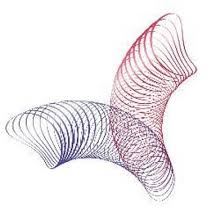Leg Ulcer Management
Types of leg ulcers
There are different types of ulcers of the skin. The ones affecting the lower leg are categorised by the reasons in which they form in the first place.
This depends on either blood supply to the foot (arterial) or poor or stagnant blood return from the foot (venous). In other cases it may be due to poor sensation to the foot with the most common cause being poor diabetic control (neuropathic).
Click on the links below to learn more about these types of ulcers
Treatment of Leg ulcers
The type of treatment that will be carried out will very much depend on knowing what type of ulcer you have.
You may require a test called an ankle brachial pressure index (ABPI) test. while you lie on your back, the GP or practice nurse will measure the blood pressure in your upper arms and ankles using a cuff and a Doppler probe. A Doppler probe uses sound waves to determine the blood flow in your arteries
This will give us information to direct your treatment. If your blood supply to your foot (arterial) is good then it s likely the nurse will recommend compression dressing to help the blood return from your foot. Stagnant blood in the tissues causes poor healing.
Further information about venous ulcers can be found here
Useful Sources of Information
Page created: 27 May 2020

